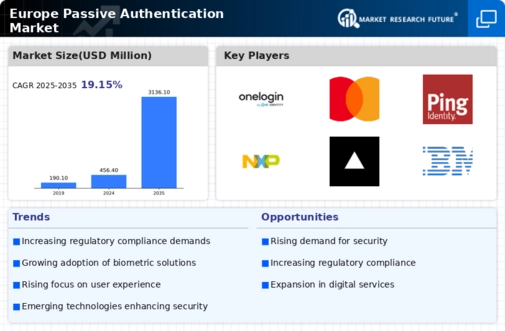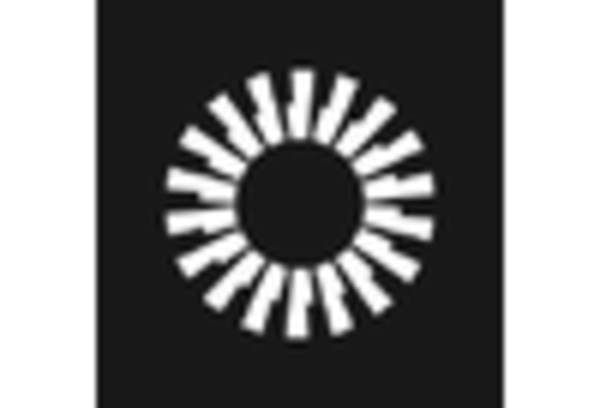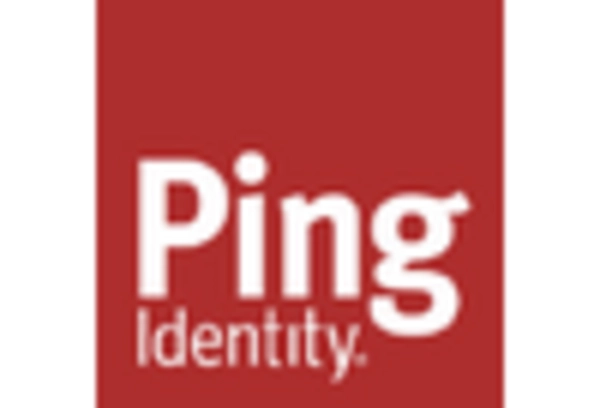Rising Cybersecurity Threats
The increasing frequency and sophistication of cyberattacks in Europe has heightened the demand for robust security measures, particularly in the passive authentication market. Organizations are compelled to adopt advanced authentication solutions to safeguard sensitive data and maintain user trust. In 2025, it is estimated that cybercrime will cost businesses globally over $10 trillion annually, prompting European companies to invest heavily in security technologies. This trend indicates a growing recognition of the need for seamless yet secure user verification processes, which passive authentication solutions can provide. As a result, the passive authentication market is likely to experience significant growth as businesses seek to mitigate risks associated with data breaches and identity theft.
Increased Mobile Device Usage
The proliferation of mobile devices across Europe has transformed how users interact with digital services, thereby influencing the passive authentication market. With over 80% of the European population owning smartphones, the demand for user-friendly authentication methods has surged. Passive authentication technologies, which allow for seamless user verification without active input, align well with the expectations of mobile users for convenience and security. This shift is reflected in the market, where the adoption of biometric and behavioral authentication methods is on the rise. The passive authentication market is thus poised for expansion as businesses adapt to the mobile-first approach, ensuring that security measures do not compromise user experience.
Regulatory Pressures for Enhanced Security
European regulations, such as the General Data Protection Regulation (GDPR), have imposed stringent requirements on data protection and user privacy. These regulations are driving organizations to adopt more secure authentication methods, thereby impacting the passive authentication market. Compliance with these regulations necessitates the implementation of advanced security measures that can effectively protect user data while ensuring a smooth user experience. As businesses navigate the complexities of regulatory compliance, the demand for passive authentication solutions that meet these standards is likely to increase. This trend indicates a growing market opportunity for providers of passive authentication technologies that can help organizations achieve compliance while enhancing security.
Growing Demand for Seamless User Experiences
In the competitive landscape of digital services, providing a seamless user experience has become paramount for businesses in Europe. The passive authentication market is responding to this demand by offering solutions that minimize friction during the login process. As organizations strive to enhance customer satisfaction and retention, the integration of passive authentication methods, such as continuous authentication and risk-based assessments, is becoming increasingly prevalent. Research indicates that companies that prioritize user experience can see conversion rates increase by up to 400%. This trend suggests that the passive authentication market will continue to thrive as businesses recognize the importance of balancing security with user convenience.
Technological Advancements in Authentication Solutions
The rapid evolution of technology is significantly influencing the passive authentication market in Europe. Innovations in artificial intelligence, machine learning, and biometrics are enabling the development of more sophisticated authentication methods that require minimal user interaction. These advancements not only enhance security but also improve the overall user experience. For instance, AI-driven behavioral analytics can identify anomalies in user behavior, allowing for real-time risk assessment and authentication. As organizations increasingly adopt these cutting-edge technologies, the passive authentication market is expected to grow. The integration of advanced technologies into authentication solutions presents a compelling opportunity for businesses to enhance security while streamlining user access.

















Leave a Comment